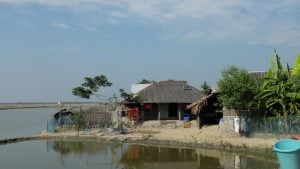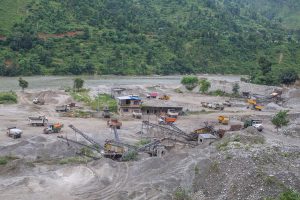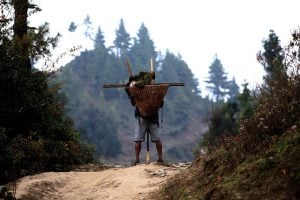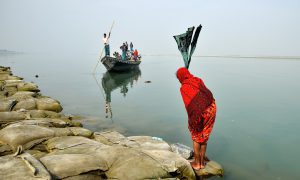Water scarcity is a serious and growing security challenge for South Asian countries. The twin pressures of population growth and climate change are further intensifying this problem. In this context, shared river systems, the major sources of fresh water in the region are often becoming flashpoints of tension. One of the most critical such river systems is the Indus.
Partition of a river basin
The Indus river basin covers an area of 1,165,000 square kilometres across four countries – Afghanistan, China, India and Pakistan. Immediately after independence, two major beneficiaries of the basin, India and Pakistan came into dispute over their share of water in the Indus system. After more than eight long years of hard negotiation, India and Pakistan reached an agreement on 19 September 1960.
The 1960 treaty was an extension of the 1947 partition process as it allocated the three eastern rivers of the basin – the Ravi, Beas, and Sutlej – to India, and the three western rivers – the Indus, Jhelum, and Chenab – to Pakistan. The World Bank as mediator had envisaged the agreement would treat the whole basin as a single unit so that the two riparian states could cooperate in more effective ways for the sustainable management of river and land resources. But the Indus Waters Treaty, in facilitating the partition of the river system between the two riparian countries, has in fact contributed to reducing the scope of engagement between them.
See: Politics dictated Indus Waters Treaty from first to last
Fights between neighbours, and within countries
The deep mistrust between India and Pakistan has thwarted the implementation of a number of seemingly advantageous water development projects in the basin, of which the Tulbul/Wular project is only one of the more conspicuous. This project has all the ingredients to provide a win-win situation for both the riparian countries. Still it has been stalled for nearly three decades.
While the Indus Waters Treaty has brought a formal river-sharing agreement between two states, India’s provinces, especially Punjab, Haryana and Rajasthan, continue to fight over their rightful share of the waters of the Ravi, Beas and Sutlej Rivers. This is also the case among the provinces of Pakistan, who regularly contend with one another over the waters of the Indus, Jhelum and Chenab.
Domestic contentious politics in both countries has stopped the implementation of extremely critical water development projects in the basin. The half-completed Yamuna–Sutlej Canal in India – where the Indian state of Punjab has refused to share the waters of the Beas and Ravi with Haryana – and the long-planned Kalabagh Dam in Pakistan – shut down due to the protests by the provinces of Sindh and Khyber Pakhtunkhwa – are clear testimony of the costs implicit in the lack of working cooperation over water sharing, not only between but also within India and Pakistan.
As a cooperative water management mechanism, the Indus Waters Treaty is far from satisfactory to both India and Pakistan. Uncertainties over the interpretation of the treaty on infrastructure development in the Western rivers have become a major source of friction in regular intervals between India and Pakistan. On the other hand, the water scarcity in the face of rapidly increasing demand has also been the source of ethnic mobilization within India and Pakistan resulting – as stated above – in the cancellation of important projects.
Pakistan worries about Afghanistan, India about China
The Kabul river, a tributary of the Indus, is shared between Afghanistan and Pakistan and is not covered within any transboundary agreement but is crucial to the livelihoods of millions of people in both the basin countries. However, recent plans by Afghanistan to develop hydropower in Kabul basin have been fueling political tension. Speculation of Indian support to Afghanistan for the proposed 12 dams on the Kabul river has further added to Pakistan’s water worries. Pakistan also fears that India’s engagement in developing infrastructure on the Kabul river will provide India another strategic advantage over Pakistan. Though India has not officially confirmed its involvement in the proposed dam building, it is closely involved in Afghanistan’s peacebuilding projects within which water development plays a very crucial part.
See: Afghanistan-Pakistan Treaty on the Kabul River Basin?
It is not only Pakistan that is worried. India is also getting tense about China’s dam projects upstream of the Indus. The report of a small size Chinese Dam near Demchok, Ladakh, on the Indus has ruffled Indians and they suspect that the China might soon go for building dams on the Sutlej upstream.
In order to achieve basin-based cooperation for promoting food security, enhancing livelihoods and developing infrastructure in the Indus river system, it will be essential to first build confidence between India, Pakistan, China and Afghanistan.
Climate change adds a squeeze
The water scarcity situation is gradually worsening in the basin. Climate change is increasing the uncertainties when it comes to water supply. Integrated development of the basin would create opportunities to build more storage facilities across the Indus and its tributaries to ensure better management of the scarce water. Some of the important water development projects have failed to materialize, particularly in India and Pakistan due to bilateral mistrust and internal politics.
For appropriate and competent management of Indus systems, it is necessary to establish an effective and independent river basin organisation, involving all the four riparian states. This organisation should have the capability of taking decisions on its own and remain out of the political control of any national government. Under an integrated programme of basin development, water projects can be situated at optimum locations, notwithstanding geographic divisions along political lines. Borders will have to become irrelevant to properly manage water for the best use of the people in the countries.
If both India and Pakistan come forward and together with China and Afghanistan renegotiate a new Indus agreement for a comprehensive and integrated form of basin management, the benefit sharing of Indus River system will not be limited only to water resources; it can also significantly contribute to the regional peace, security and development
Ashok Swain is professor of peace and conflict research at Uppsala University, Sweden, and director of the Research School for International Water Cooperation. This piece is an abridged version of author’s chapter “Water Insecurity in the Indus Basin: The Costs of Noncooperation” in Zafar Adeel & Robert G. Wirsing, edited book Imagining Industan: Overcoming Water Insecurity in the Indus Basin (Springer, 2017), pp. 37-48.
![<p>The Indus could be a river of peace [image by Karunakar Rayker]</p>](https://dialogue.earth/content/uploads/2017/03/Indus-Valley-Karunakar-Rayker.jpg)








